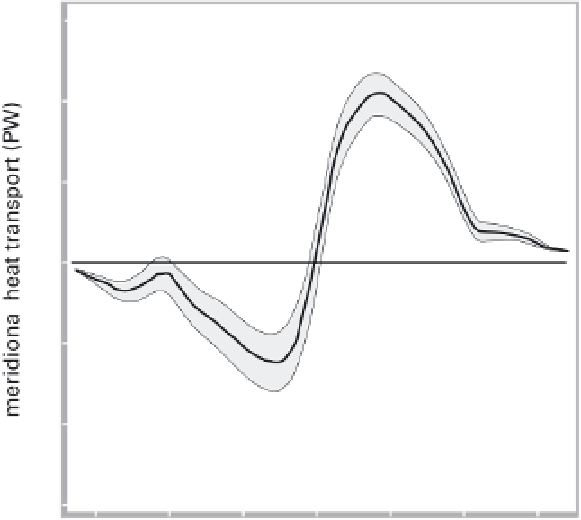Environmental Engineering Reference
In-Depth Information
2.5
Global ocean heat transport. Meridional rates based on
Ganachaud and Wunsch (2003).
seas were traced only recently: low-salinity water moves
through the Makassar and Lombok Straits, and more
salty water goes through the Banda Sea (Gordon and
Fine 1996; Gordon, Susanto, and Vranes 2003).
MOC requires about 2 TW in order to turbulently
warm the abyssal waters and warm them enough so they
can upwell (Alford 2003). Hydrographic records indicate
that the ventilation of the deep North Atlantic has stead-
ily changed over the past four decades and that the sub-
polar seas have become fresher and warmer, suggesting a
slackening of the MOC (Dickson et al. 2002). Weaken-
ing of this circulation could have undesirable conse-
quences for major ocean currents, marine ecosystems
(because of reduced upwelling of nutrient-rich deep wa-
ter), and regional climate (Clark et al. 2002; Schmittner
2005). Measurements taken during the World Ocean
Circulation Experiment have improved our understand-
ing of large-scale ocean heat transport. While consider-
able uncertainties remain (particularly in the Southern
Ocean with its paucity of data), grand patterns are clear
(fig. 2.5) (Ganachaud and Wunsch 2003).
The Atlantic Ocean shows positive northward meri-
dional heat transport across all of the studied hydro-
graphic sections between 45
S and 47
N, with maxima
of 1.26 and 1.27 PW at 7.5
N and 24
N. In con-
trast, the Indian and Pacific oceans show pronounced














